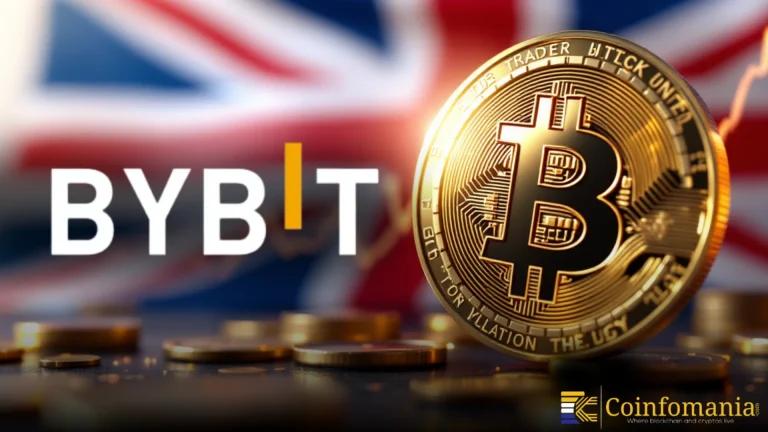Dr Martin Hiesboeck Breaks Down J.P. Morgan’s First Blockchain Transaction and Its Implications
Dive into Dr. Martin Hiesboeck’s insights on J.P. Morgan’s Kinexys bridging Traditional Finance and Decentralized Finance.

Quick Take
Summary is AI generated, newsroom reviewed.
Dr. Hiesboeck highlights J.P. Morgan’s Kinexys platform, enabling secure cross-chain transactions with public blockchains.
The transaction demonstrates real-world asset tokenization and potential for TradFi–DeFi integration.
Hiesboeck emphasizes technical soundness, compliance, and partnerships as key factors for blockchain adoption in finance.
On May 27, Dr. Martin Hiesboeck shared analysis regarding J.P. Morgan’s Kinexys milestone, settling a transaction on a blockchain. The transaction was executed through Chainlink and involved Ondo’s OUSG tokens representing U.S. Treasuries. It highlights real-world asset tokenization within a regulated financial system using blockchain technology. Hiesboeck’s report notes that the Kinexys platform handles about two billion dollars in daily transactions. The payment leg passed through Kinexys, while the asset leg used OUSG tokens. This event marks a notable step in merging TradFi and DeFi effectively.
Kinexys Explores Tokenized U.S. Treasuries in Test Transaction
According to Hiesboeck’s report, the transaction used Chainlink as the orchestration layer for cross-chain settlement. This allowed atomic Delivery versus Payment settlement between the permissioned Kinexys network and the public chain. This arrangement demonstrates interoperability between tradition and technology on blockchain. Hiesboeck notes that this step shows the merging of legacy infrastructure with new blockchain workflows. The process could improve efficiency and reduce risks in cross-border payment settlements. Market participants may watch similar integrations for future blockchain use in finance. Observers now consider blockchain settlement practical for future institutional transactions.
J.P. Morgan’s Kinexys platform has typically operated within permissioned blockchain environments. Hiesboeck’s report shows integration with a public chain as a strategic evolution step. The trial transaction on a test network combined regulated payments and tokenized assets successfully. This approach places Ondo’s OUSG tokens at the center of asset transfer methods. OUSG is designed to represent short-term U.S. Treasuries with stable backing. The successful test could encourage broader use of tokenized Treasury assets in markets. This model highlights clear benefits of integrating regulated finance and blockchain capabilities.
Future of Secure Cross-Chain Transactions From Hiesboeck’s Viewpoint
Hiesboeck believes the technical feasibility of secure cross-chain transactions has been demonstrated through this settlement. Traditional Delivery versus Payment methods often face delays and increased operational risks. Blockchain-based atomic settlement can reduce counterparty risk and enhance settlement transparency significantly. Participants gain real-time visibility into asset movements across multiple networks and systems. The model may lower costs by reducing intermediary roles in complex workflows. Future settlements could adopt similar frameworks to improve speed and reliability. This proof-of-concept could shape industry standards for transparent and efficient asset settlements.
Hiesboeck’s report suggests these developments may impact the broader altcoin market soon. Big collaborations like J.P. Morgan’s Kinexys and Ondo could attract more institutional attention. Projects lacking clear use cases or regulatory alignment may struggle with significant adoption. Hiesboeck emphasizes that compliance and technical soundness will guide institutional interest in tokens. Strong partnerships between financial institutions and blockchain providers may drive project credibility. Clear regulatory frameworks could further influence which tokens gain durable market relevance.
Institutional Investments May Rise with Regulatory Clarity in Blockchain
This milestone may boost regulatory confidence around public blockchain use in finance. As J.P. Morgan’s Kinexys explores public networks, regulators could draft clearer guidance. Hiesboeck believes formal frameworks may follow increased industry engagement with blockchain. A defined regulatory landscape could encourage more institutional investments in blockchain assets. Nevertheless, utility, compliance, and security factors remain essential for successful adoption. Future regulatory clarity could define paths for blockchain-based service evolution.
The Future Of Finance: Merging Traditional and Decentralized Models
Hiesboeck predicts future finance models combining elements of TradFi and DeFi systems. Public blockchains for real-world settlements may blur the lines between legacy and decentralized services. Institutions may assess blockchain projects based on capabilities, compliance, and partnership strength. Practical use cases will likely outweigh speculative interests in the tokenized finance landscape. Hybrid frameworks may improve liquidity, transparency, and risk management across financial networks. Observers expect continued evolution towards integrated token models in regulated environments. This shift could reshape the future of secure, tokenized financial services worldwide.
References
Follow us on Google News
Get the latest crypto insights and updates.
Related Posts

Coinbase Lawsuit Sparks High-Stakes Battle Over Prediction Market Regulation
Vandit Grover
Author

Bybit Returns to the UK Market With Over 100 Crypto Trading Pairs
Vandit Grover
Author

Whale Flips Bearish After Selling $21M Bitcoin and Opening Massive 10× Shorts
Triparna Baishnab
Author